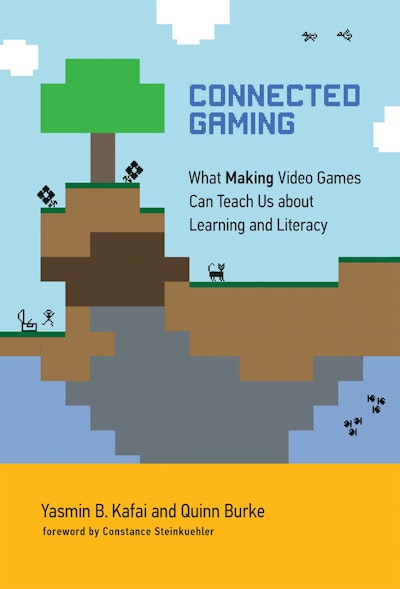- Published: 19 March 2024
- ISBN: 9780262551557
- Imprint: MIT Press Academic
- Format: Paperback
- Pages: 224
- RRP: $85.00
Connected Gaming
What Making Video Games Can Teach Us about Learning and Literacy
- Published: 19 March 2024
- ISBN: 9780262551557
- Imprint: MIT Press Academic
- Format: Paperback
- Pages: 224
- RRP: $85.00
The best way to make a critical reader is to teach someone to write. The best way to make a critical gamer is to teach someone to design games. That's how you liberate young people to be problem solvers and innovators. Kafai and Quinn's book is essential reading for all educators and anyone else interested in modern teaching and learning.
—James Paul Gee, Mary Lou Fulton Presidential Professor of Literacy Studies, Regents' Professor, Arizona State University; author of What Video Games Have to Teach Us About Learning and Literacy
Connected Gaming is a landmark book on games and learning that situates cutting-edge research on games within the deep and enduring work of constructionism and participatory learning. It offers a crucial touchstone for parents, educators, and companies building games for social impact, and will serve as a critical volume for decades to come.
—Kurt Squire, Department of Informatics, University of California, Irvine; author of Video Games and Learning
In Connected Gaming Kafai and Burke lay out a solid rationale and strong evidence for connecting learning and gaming through game construction. The compelling case that they make not only draws upon decades of their own work but uniquely connects with dozens of other projects and initiatives. It draws a logical line between the contructionist thinking of Papert straight through to Minecraft. This is a book that provides evidence to academics, educators, and innovators seeking to engage students through new pedagogies and teach them new practices in meaningful ways. Kafai and Burke have paved the way for decades more work connecting gaming, constructionism, and learning.
—Eric Klopfer, Professor/Director, MIT Scheller Teacher Education program; author of The More We Know and Augmented Learning
